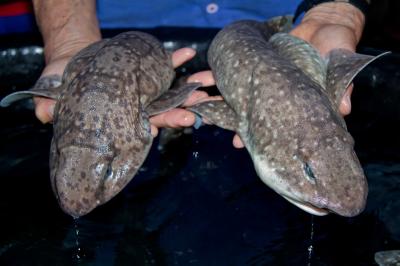Scientists have captured the first footage of an elusive deep sea shark inhabiting the waters near Southeast Asia’s Timor-Leste.
Cephaloscyllium pictum, or the painted swellshark, was first discovered in 2008 based on five specimens collected at fish markets in Lombok and Bali, Indonesia.
The shark species grows to about 700mm (27in) and was identified as new based on its distinct variegated colouration and a “small maximum size”, scientists say.
It has been known mostly only via fish market samples with “very little” ecological information on the species, researchers say.

Now, for the first time, deep-sea cameras have captured footage of this species.
The videos were captured at two sites off Dili, Timor-Leste, at depths of about 570m (1870ft) and 536m (1760ft) on 17 and 18 November 2024.
At both the sites, scientists say the shark returned to the camera several times, and in one instance a female shark interacted with the bait and made several passes in front of the camera.
“To our knowledge, this species has never been observed in the wild, and little is known about its ecology, habitat or behaviour,” they wrote in the journal Oryx.
“This is a new species record for Timor-Leste and extends the species’ known range by over 1,100km,” researchers noted.
Currently, Cephaloscyllium pictum is categorised as “Data Deficient” by the International Union for Conservation of Nature’s Red List due to limited available information on the shark species.
Very little information is currently known about the diversity and distribution of sharks in the region, “especially for deep-sea species”, they say.
The new footage suggests the species’ natural habitat consists of steep rocky underwater slopes near eastern Indonesia – information that could be key to informing conservation, scientists say.
“The discovery of the painted swellshark off Timor-Leste highlights the importance of modern, cost-effective technologies to survey the deep sea and locate these lost sharks before they vanish,” researchers wrote.
The underwater survey used low-cost deep-sea cameras developed by the National Geographic Society Exploration Technology Lab (NGETL), providing a new way to study deep sea environments.
The new deep-sea camera system was reportedly made using a low-cost, lightweight remote lander platform.
This system is designed to collect environmental data and capture 4K high-resolution video to depths of 6,000 m (19,685 ft), Mongabay reported, citing NGETL.
Source: independent.co.uk


